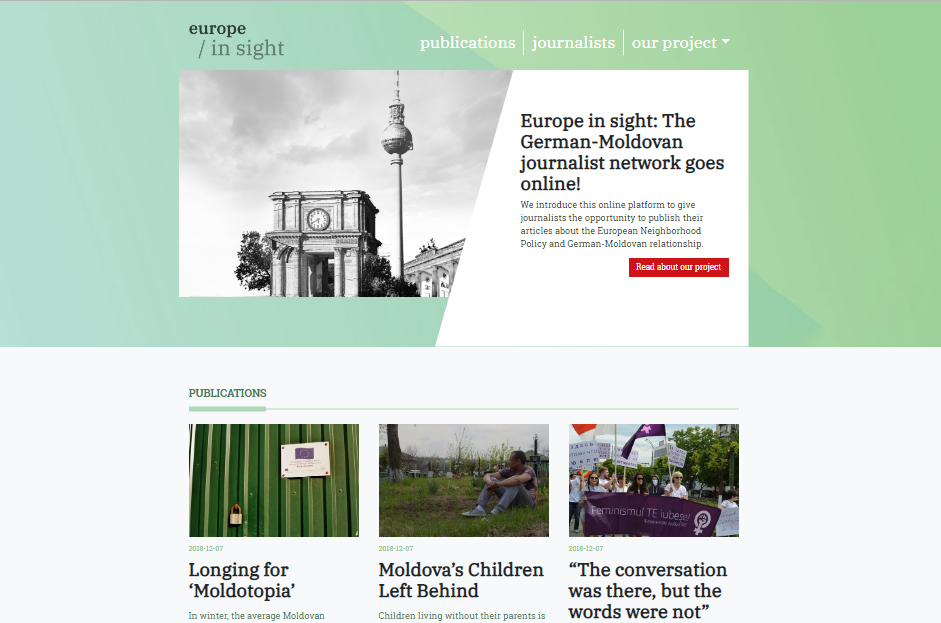
Funded by the Federal Ministry of Foreign Affairs, the Moldovan-German project entitled ‘Europe in sight: The German-Moldovan journalist network goes online!’ was conceived as a way to reflect through the media the most important aspects of local development policies, but also the implementation of the Association Agreement between the European Union and the Republic of Moldova. The aim was to encourage the enlargement of political and economic cooperation on the basis of the European Neighbourhood Policy (ENP).
The project actually endeavoured to bring young Moldovan and German journalists closer and in doing so – to create an extra bridge between the two countries. Because as it is known, there’s always room for a getting to know one another better.
The first stage of the project took place in Chisinau, during 16-23 September, when the School of Advanced Journalism Studies hosted the 12 young German journalists on their mission to discover the Republic of Moldova. The week was very busy – formal and less formal meetings took place, state institutions were visited: ministries, the Parliament, embassies, but also TV stations or non-governmental organisations. The range of tackled topics was very wide, among them were the political and socio-economic realities of the Republic of Moldova, the European integration process and the bilateral relations with Germany, the parliamentary elections of February 2019, the brain drain and the migration phenomenon. The German journalists had come well prepared to Chisinau...
The reciprocal visit to Berlin took place during 4-11 November 2018. The Chisinau team included journalists already working in various editing offices, as well as students and graduates of the SAJS, for whom this project was an opportunity of professional development. In Berlin too, the journalists visited public authorities and NGOs. They learned what are the priorities of the Moldovan Emnassy in Germany, they participated in one of the most watched morning TV shows in Germany. They sought to find out more information for the material they wrote first thing when they came back home. Among the most frequently asked questions were those related to Chisinau authorities fighting corruption, the judiciary reform, the development of the rule of law and democracy, the promotion of a free and independent press.
Last but not least, the young journalists also focused on human stories that resulted – directly or indirectly – from Moldova’s cooperation with Germany and the EU. According to Sebastian Rösner, the German coordinator of the project, its success was not only about the created media products, but especially about the connection between the German and Moldovan journalists. ‘They communicated, they had fun and helped one another to find subjects and the required sources. Actually, although they undersigned the texts individually, there was teamwork behind that, so we can say we achieved our purpose of creating a network of journalists.’ Rösner said, believing every word of it.
All the media products developed under the project – articles, podcasts, photo galleries, footages, interviews, coverages and success stories – were published on the websites of the editorial offices that the project participants work for. All of them can also be found in English, on http://www.europe-in-sight.eu – the first-of-its-kind platform in the Republic of Moldova, built with the participation of the School of Advanced Journalism Studies, and which will be used in the future by the SAJS students.










